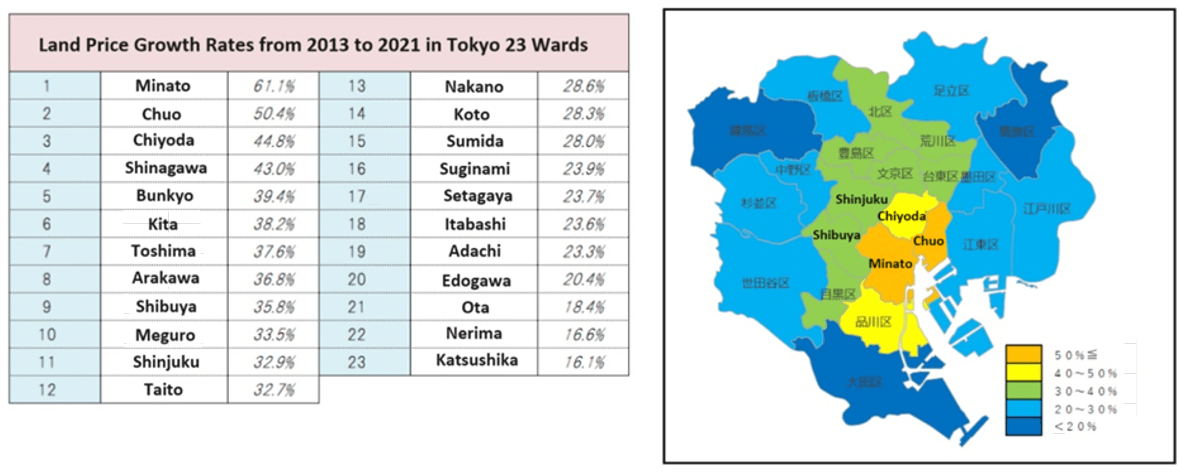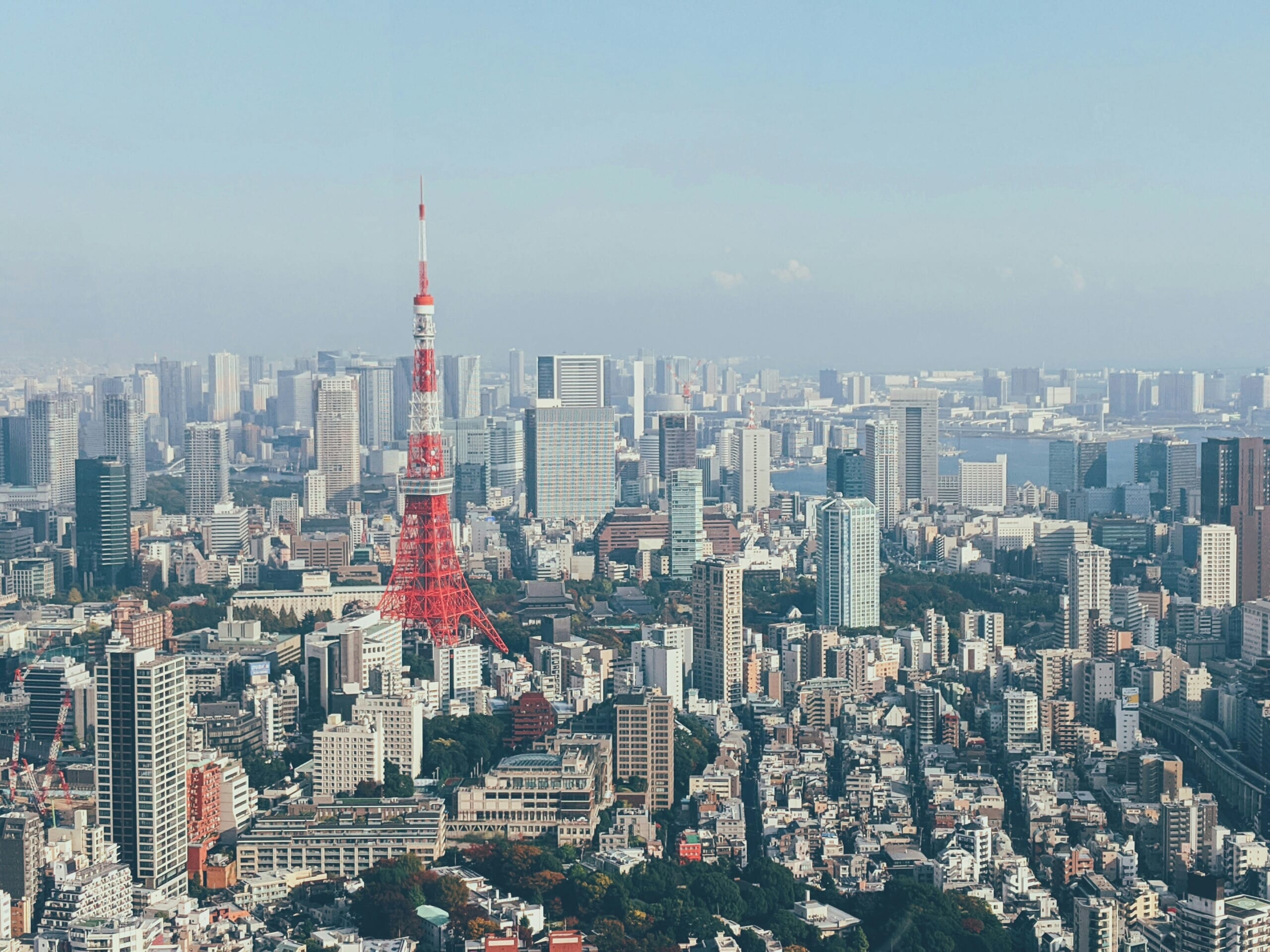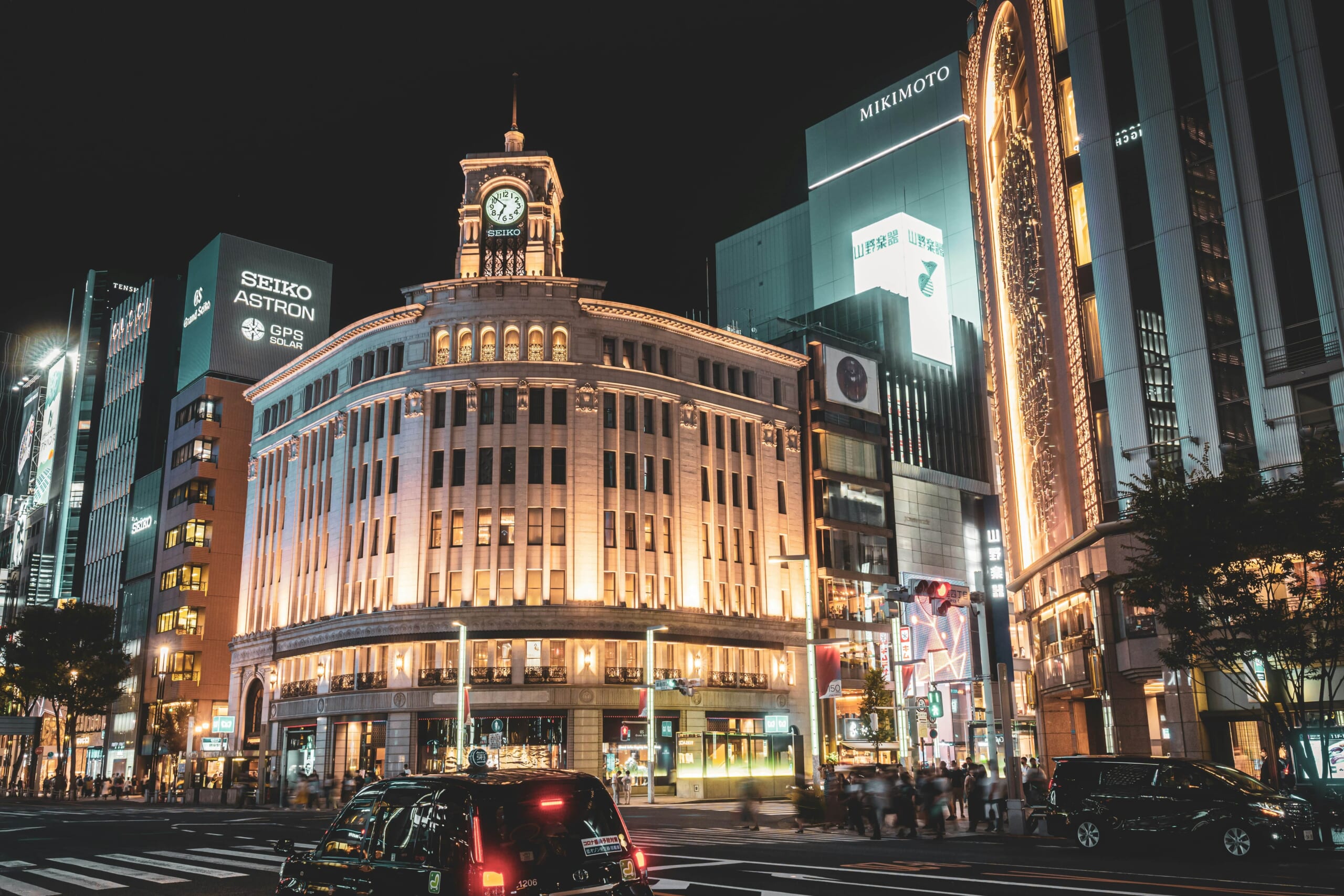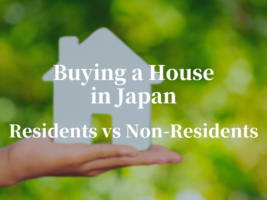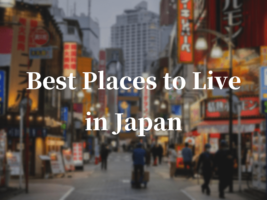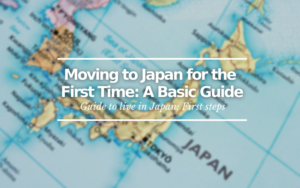Tokyo Property Market and Recommended Areas for Property Investment
Navigating Trends and Investment Hotspots in Tokyo's Evolving Real Estate Landscape
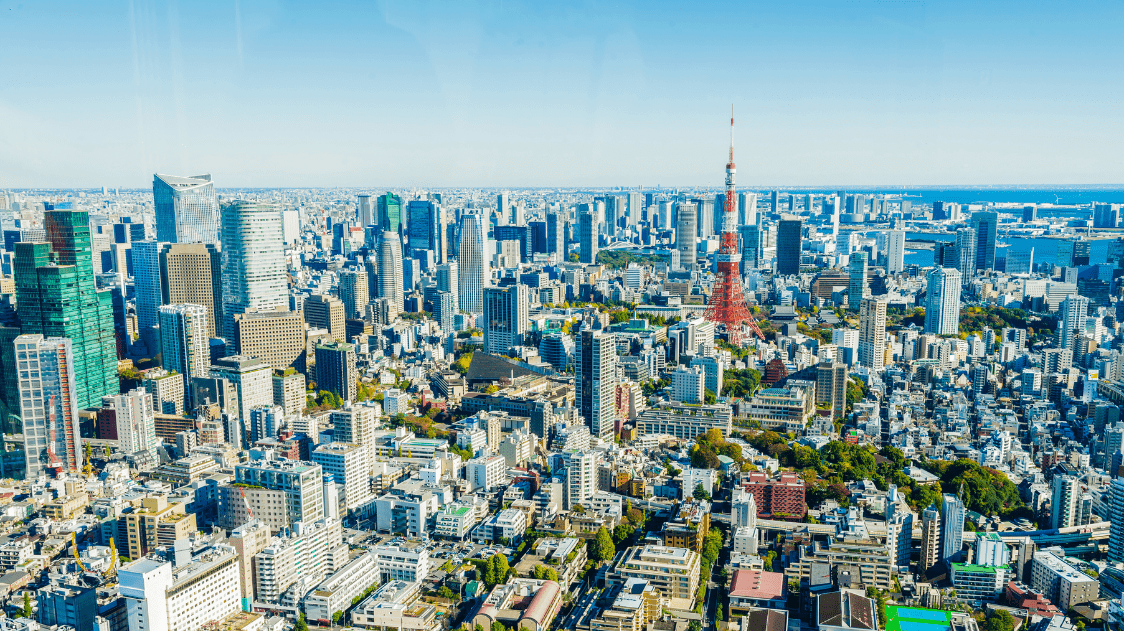
In this article, we are going to look at the latest Tokyo property market and recommended areas for property investment. First of all, let us look at the trends of new condominium unit prices in Tokyo’s 23 wards.
New Condominium Unit Average Prices in Tokyo’s 23 Wards

The average price of new condominiums sold in Tokyo’s 23 wards in 2023 was 114.83 million yen (up 39% from the previous year), exceeding the 100 million yen mark for the first time.
On the other hand, on the supply side, the supply of new condominium units in Tokyo 23 wards recorded 10,797 units in 2022, which was the lowest level since 2005 (65% decline vs 2005).
The main factors for the short supply of newly built condominiums are the disruption of the supply chain caused by the pandemic, the increase of the price of construction materials due to inflation, and the dwindling numbers of construction workers
Supply of New Condominium Units
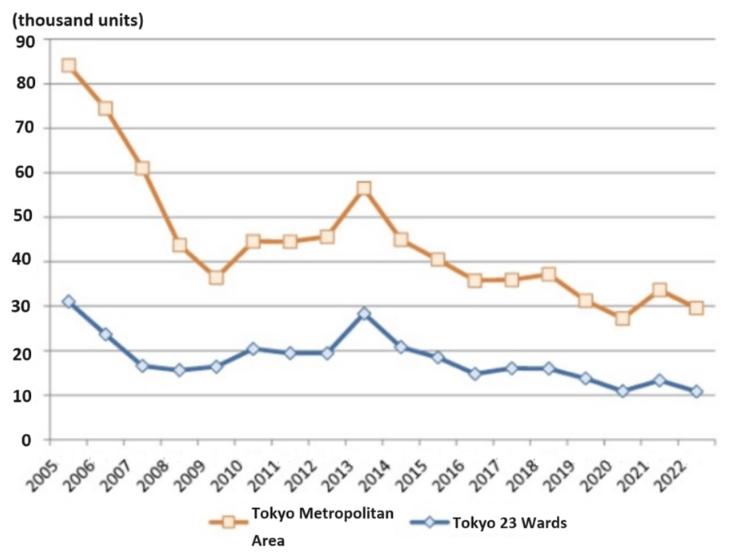
Since the supply of new condominium units in Tokyo is projected to remain low, prices of new condominium units are likely to further go up.
Then, which parts of Tokyo are good for property investment? The answer is the area called Core 5 Wards (Minato, Chiyoda, Chuo, Shinjuku, and Shibuya). These wards are promising in terms of demand and population projections, since the population continues to grow at a faster pace than in other areas.
Population Projections
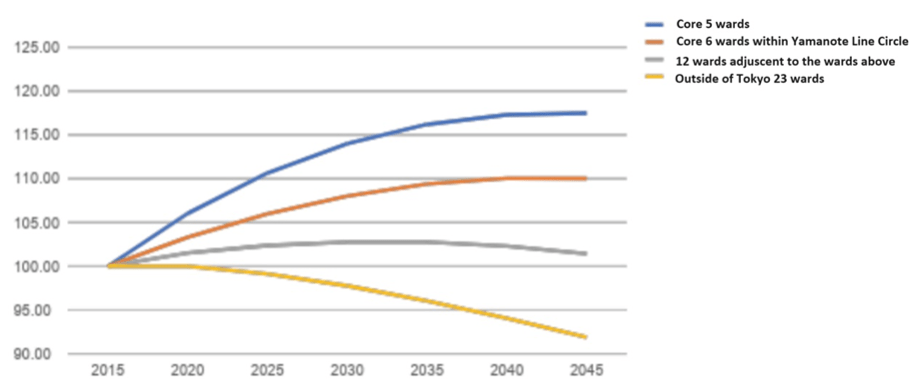
The price history proves that the prices in these Core 5 Wards indeed show upward trends.
Land Price Growth Rates in Tokyo 23 Wards from 2023 to 2021
Now let’s look at the characteristics of the Core 5 Wards.
Minato Ward:
Minato is one of the wards with the steepest streets in Tokyo. Minato Ward is a representation of the typical image of Metropolitan Tokyo, with iconic landmarks such as Tokyo Tower, Roppongi Hills and Rainbow Bridge and upscale residential areas exuding a sophisticated atmosphere such as Aoyama and Azabu. Minato ward is also home to most of the embassies in Tokyo and tends to attract high net worth foreigners. As a result Minato is the area with the highest price increases and bigger than average apartments with good views tend to sell extremely fast. High rise condominiums with a view of Tokyo tower are especially prized and some people wait years for specific units to hit the market. Other popular properties are low rise residential buildings with parking included located near international exchange hubs such as the Tokyo American club.
Chiyoda Ward:
Chiyoda Ward is a concentration of buildings and institutions of national importance, including the Imperial Palace surrounded by lush greenery, the Diet Building, the Prime Minister’s Office and the Supreme Court. Many people associate Chiyoda Ward with a business district, Akihabara – known as Japan’s largest electronic town – and Jimbocho – called the world’s best book town – are also located in Chiyoda Ward. Since comparatively little of Chiyoda ward’s zoning is residential, residential units don’t get listed for sale as often and quickly find a buyer. The most popular properties are those that offer a view of the imperial palace gardens. There are exclusive residential developments in areas such as Marunouchi and Hanzomon, catering to affluent residents seeking upscale living in central Tokyo.
Chuo Ward:
From the Edo period to the present, Chuo Ward has developed as a symbolic cultural, commercial, and financial center of Japan. The modern buildings erected by redevelopment projects are woven into the historic town, creating uniquely interesting landscapes. Chuo Ward is home to nationally known commercial areas, such as Nihonbashi, which flourished as the starting point of Japan’s transportation network and now where the headquarters of many major companies are located; Ginza, one of Japan’s leading shopping districts where top brand stores, luxurious department stores and stores with a long-standing history exist together; and Tsukiji, which is also known as Tokyo’s Kitchen. Office workers that have above average income and who wish to avoid public transportation to commute to work often choose to live in Chuo near their workplace, and as such residential units are always in high demand. The waterfront areas can offer scenic views of Tokyo bay, and are thus particularly sought after.
Shinjuku Ward:
Shinjuku is one of the most glamorous and attractive wards among Tokyo 23 wards. The landscape created by the massive Shinjuku Station surrounded by large commercial facilities, the forest of skyscrapers in the Shinjuku sub-center area, and Japan’s largest entertainment district Kabukicho has now become a symbol of Tokyo Metropolis. Shinjuku is also home to many academic facilities such as museums, art galleries, Noh theaters, and theaters. While being a major commercial center of Tokyo, Shinjuku has a relatively large number of residential areas. Korea Town is also located in this ward. The average price of real estate in Shinjuku is the lowest of the core 5 wards and as such gives options even to budget investors. The zoning is varied and all types of properties are available, including detached houses, which are hard to find or can be prohibitively expensive in the other core 5 wards.
Shibuya Ward:
Shibuya is a town buzzing with fashion trends and new cultures. Although this ward has a strong commercial flavor with large-scale shopping centers around Shibuya Station welcoming visitors, Meiji Jingu and other parks add lush greenery to the townscape, blending city and nature in harmony. Shibuya encompasses diverse neighborhoods of totally different atmospheres, including Harajuku, a town for the young, Omotesando, an upscale shopping destination, and Ebisu, with its many unique and stylish stores. Shibuya offers a mix of residential options, from high-rise apartments to smaller units in older buildings. Prices tend to be relatively high due to the district’s popularity and central location within Tokyo. There is significant demand for residential properties in Shibuya, particularly among young professionals and expatriates attracted to its lively atmosphere and convenience. Shibuya continues to undergo redevelopment and revitalization projects, aiming to enhance infrastructure and accommodate growing demand. This creates opportunities for real estate investors and developers.
For more information
For more information, please contact the following!
Naoyuki Takeda
Senior Asset Manager (Registered Real Estate Broker)
Property Access K.K.
https://naoyuki-takeda.youcanbook.me/
▽Subscribe to our free news magazine!▽
For more information about living in Japan, be sure to check out the following articles!
▼Related topics▼
▼Editor’s picks▼
Written by
Born and raised in Costa Rica, I started living in Tokyo from college. I love traveling within Japan & around the world. Since I wasn’t born in Japan, I know the cultural impact that you can get when visiting Japan for the first time and what you might be worried about before your trip. And I’ve lived long enough to somewhat understand the nuances of the Japanese culture that make this country such an attractive place to visit. Hopefully I can provide to you both the information you’re looking for and the information you didn’t know you needed to know.





